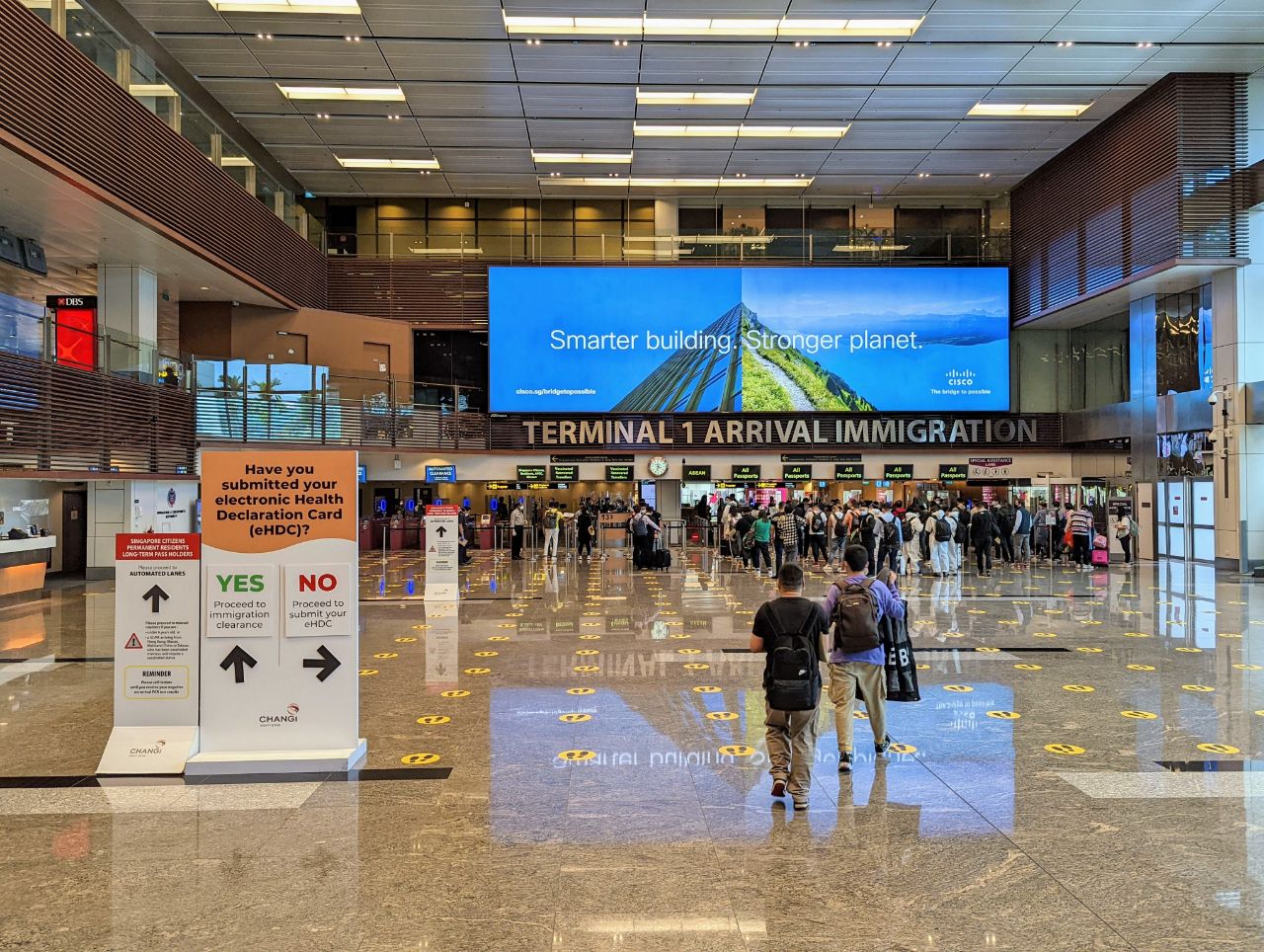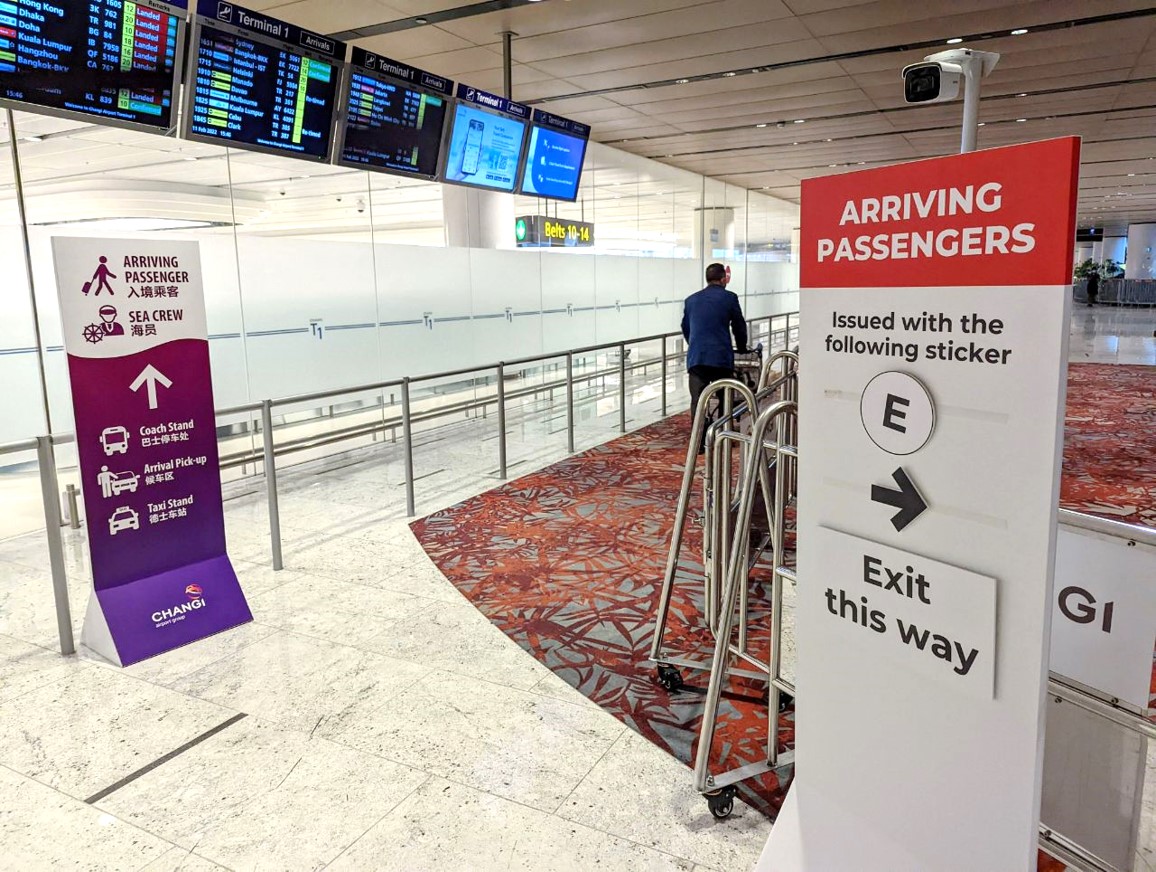Singapore has historically assigned countries into four categories, imaginatively named Category I, II, III and IV (with VTLs being a subset of Cat. II). This determined what testing and SHN requirements arriving travellers would be subject to, with the worst case scenario being a 10-day SHN at a hotel.
This will change from 22 February 2022, as Singapore further relaxes its border measures:
- Category II, III and IV will be combined into a single General Travel category with a 7-day SHN at home and a PCR test at the end of SHN
- An additional Restricted category will be created, with stricter testing requirements and a 7-day SHN at a hotel (this category will be empty initially)
- The relevant travel history period will be shortened from 14 days to 7 days
- Category I and VTL travellers will book and take supervised ART swabs within 24 hours of arrival, instead of PCR tests at the airport
- Fully vaccinated long-term passholders (except work permit holders) need not apply for a VTP or Entry Approval to enter Singapore
- No more COVID-19 testing requirement for transit passengers; freedom of movement in transit area
This means that (until a country gets added to the Restricted category), mandatory hotel-based SHN will end, and the maximum SHN duration will be 7 days.
Singapore’s new border risk classifications

Here’s a summary of Singapore’s revised border risk classifications, which take effect from 22 February 2022.
| Category | SHN | PDT | On-arrival Test |
| Category I | N/A | ART or PCR within 2 days of depart. to SG | Supervised ART within 24h |
| General Travel: VTL | N/A | ||
| General Travel: Non-VTL | 7 days (Home) |
PCR at end of SHN | |
| Restricted | 7 days (Hotel) |
PCR within 2 days of depart. to SG | PCR on arrival PCR at end of SHN |
| Category I: China, Macau, Taiwan VTL: Australia, Brunei, Cambodia, Canada, Denmark, Finland, Fiji, France, Germany, India, Indonesia, Italy, Malaysia, Maldives, Netherlands, South Korea, Spain, Sri Lanka, Sweden, Switzerland, Thailand, Turkey, UK, USA [From 25 Feb: Hong Kong, Qatar, Saudi Arabia, UAE; From 4 Mar: Israel, Philippines] Non-VTL: All other countries Restricted: No countries at the moment |
|||
Category I will consist of China, Macau and Taiwan (Hong Kong has been downgraded to General Travel: VTL). The only difference compared to before is that travellers will do a supervised ART within 24 hours of arrival instead of a PCR test, with isolation required until a negative result is received.
General Travel: VTL consists of the 30 VTL countries (24 existing plus the six new ones announced yesterday). Just like Category I, VTL travellers will do a supervised ART within 24 hours of arrival instead of a PCR test, with isolation required until a negative result is received. No SHN is required.
| ✔️ VTL Eligibility Criteria [From 22 Feb 2022] |
|
| All |
|
| Short-term visitors & Work permit holders |
|
| *Children aged 2 or under in the current calendar year are exempt ^Exception for children aged 12 and below, if they are accompanied by vaccinated traveller |
|
General Travel: Non-VTL consists of all other countries not in Category I or VTL, and subsumes the former Category II, III and IV. These travellers will serve a 7-day SHN, which can be done at home or a self-sourced hotel.
Restricted will consist of countries that warrant stricter border control measures due to the COVID-19 situation, such as variants of concern. This category is empty for now. Travellers will serve a 7-day SHN at a hotel, with PCR tests done pre-departure, on-arrival and post-SHN.
Since the Restricted category is currently empty, from 22 February 2022 no travellers will be required to do their SHN in a hotel. They can still opt to if they wish, but it won’t be mandatory.
That explains why many hotels which had been doing SHNs since COVID began (e.g. Courtyard Novena, Hotel Jen, InterContinental Robertson Quay) have reopened for public bookings.
7-day travel history determines categorisation
Your 7-day travel history determines which category you come under.
If you’re not travelling on the VTL, your travel history includes all the countries you’ve visited in the past 7 days, excluding transits of less than 24 hours. The most stringent category of all the countries will be applied, although this is arguably less consequential now given that Categories II, III and IV have been lumped together.
If you’re travelling on the VTL, your 7-day travel history (including transits) can only consist of Singapore, Category I or VTL countries.
No more VTP or entry approval for LTP holders
In another positive development, fully vaccinated LTP holders (except work permit holders) no longer need to apply for a VTP to travel to Singapore on a VTL flight, or Entry Approval to enter via non-VTL channels (e.g. Work Pass Holder General Lane, Student’s Pass Holder Lane).
| LTPHs | VTL | Non-VTL |
|
✔️
|
|
|
❌ Not allowed entry via VTL |
✔️ Apply for and present entry approval |
|
✔️ Apply for and present VTP |
|
Recovered traveller rules supercede all

If you’re fully vaccinated and have recently recovered from a COVID-19 infection you will be exempt from all pre-departure and on-arrival testing, as well as any SHN, when travelling to Singapore for the period of 7-90 days following the infection.
This is provided you can present either of the following documents:
- a positive COVID-19 PCR or professionally-administered ART result dated between 7-90 days before date of departure to Singapore, or
- a discharge memo (aka recovery memo)
Either document must:
- state the traveller’s name and at least one other personal identifier (e.g. date of birth, passport number)
- state the date of infection or discharge date, which must be within 7-90 days before the date of departure for Singapore
- be issued by a relevant state authority or licensed medical professional
COVID-19 patients can now visit a QTC or CTC to obtain a professionally-administered ART result that will certify their infection.
The exemption applies regardless of which country you return to Singapore from, and whether or not you take a VTL flight.
Conclusion
Singapore will be significantly easing its border measures from 22 February 2022, capping the maximum SHN duration at 7 days and removing hotel-based quarantine (at least until a country gets put in the Restricted category).
The shift to faster, cheaper ART swabbing for Category I and VTL travellers is also very welcome, as is the reduction of relevant travel history from 14 to 7 days (making it easier to combine VTL and non-VTL countries on the same trip- just visit the non-VTL country first and spend 7 days in the VTL country before coming home).
We are slowly but surely inching towards pre-COVID travel. Fingers crossed the trend continues.





Do the Recovered Traveller Rules also apply to Singaporean residents (incl. PR’s)?
Applies to all
Thanks 👍
No more Entry Approval needed for foreigners living & working in Singapore – this is the best news to me! 😃
The following measures are applicable for VTL travellers entering Singapore from 21 Feb 2022, 2359h (SGT).
“Long-Term Pass holders (excluding Work Permit holders) are no longer required to apply for a Vaccinated Travel Pass (VTP).”
Foreigners working in Singapore still need VTP
Only those on work permits.
Only work permit holders are excluded. Other foreigners holding EP and SP are not required to apply for approvals.
Do the recovered traveler rules apply to children under 6 traveling on VTL with vaccinated parents? Children of that age are exempted from being fully vaccinated but will they qualify for PDT and OAT testing through “recovered” rules?
it applies to anyone who can show the proof.
Does the following apply to tourists from non VTL countries? “If you’re fully vaccinated and have recently recovered from a COVID-19 infection you will be exempt from all pre-departure and on-arrival testing, as well as any SHN”
Hi Aaron, on the part under VTL countries w SG, ‘ Present negative pre-departure ART/PCR test taken within 2 days of flight to Singapore’., does this mean that the art has to be a supervised one taken at the departure country prior to entry Singapore? Presumably so ya instead a non-supervised one where we place the art kit w results beside the passport or some form of national identification..?